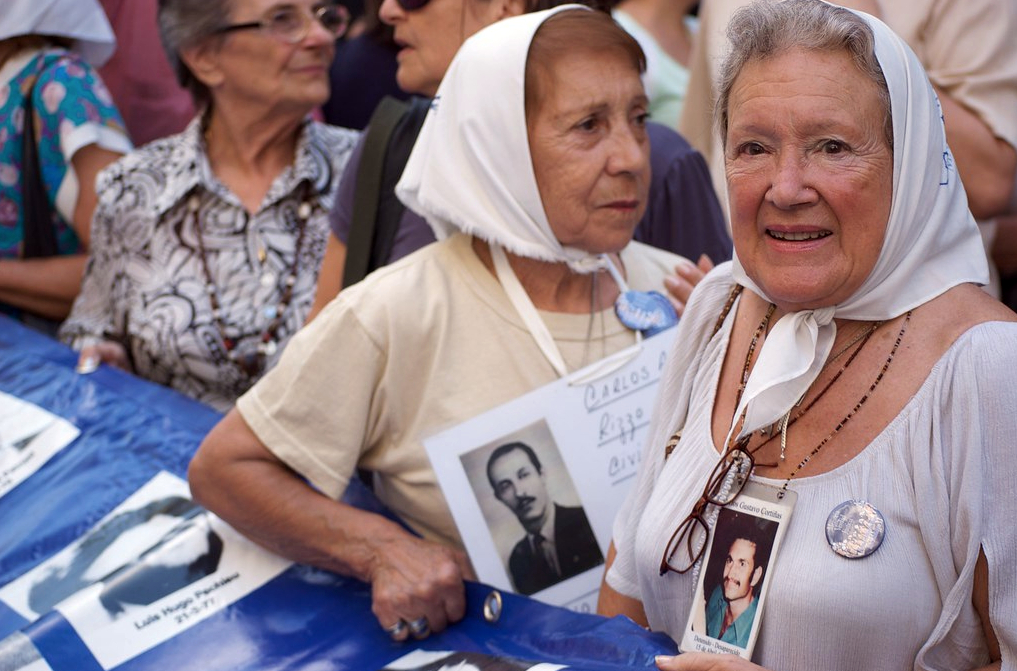The maximum exponent of human evil was the Nazi terror, which, in spite of this, kept a meticulous record of all its victims. A sinister practice that led Hannah Arendt to describe it with the famous appellation of banality. The bureaucrat scrupulously noted the steps inserted in the chain of totalitarian command. Thirty years later, however, under the umbrella of the doctrine of national security, a new systematic effort, but without light or stenographers, brought to institutionalized repression in Latin America the figure of forced disappearances. The disappeared were sucked into different places and their bodies were thrown into the sea, buried in any desert spot or unidentified in remote cemeteries. No evidence of what happened was ever left. The pain of the tortured and eliminated victim was joined by that of their loved ones who remained for years in total uncertainty in the face of the indifference or even complicity of the state.
Forty years ago, the practice of disappearance of political enemies spread to most countries in the region
Forty years ago, the practice of disappearance of political enemies spread to most countries in the region under the protection of parastatal bodies, if not directly the state itself, \with the encouragement of U.S. administrations absorbed by the Cold War. Although the cases of the Southern Cone countries were the most well-known, the figures were even more terrifying in Guatemala, as well as in Mexico.
Barbarism sanctioned a practice that Spain had experienced during the civil war by planting anonymous corpses in the ditches of roads. The legacy of that still continues in a process of necessary clarification and urgent reparation in which the state has a primary role to play.
Héctor Castagnetto da Rosa disappeared on August 17, 1971. He was last seen in a central location in Montevideo at mid-morning according to the report of the Human Rights Secretariat for the Recent Past of Uruguay. Miguel Sofía, a 70-year-old businessman who had been wanted since 2009 for aggravated homicide as the perpetrator in that and other cases, was recently captured and the judge in charge of the case charged him with responsibility for the kidnapping, torture, and disappearance of Castagnetto.
The judge issued a house arrest order for Sofia, who was a member of the death squads, also known as Comandos Caza Tupamaros or Defensa Armada Nacionalista (DAN), which were parapolice groups that operated in the 1960s and 1970s. The defense imposed an appeal of unconstitutionality based on the prescription of the facts.
On the other side of the Río de la Plata, last December 4, the Argentine Forensic Anthropology Team detailed that there are more than 600 bodies buried as NN (no name, -in Latin nomen nescio-) with their genetic profile that have not yet been identified. They then asked people looking for people who disappeared during the dictatorship to come forward to take blood samples to check for DNA matches. This circumstance occurred during the trial being held in the city of La Plata for crimes committed in three clandestine detention centers during the last dictatorship.
Cases of forced disappearance are permanently present and require an efficient response.
The drama, therefore, is not over. Today the events are framed in a different context in which the actors causing this monstrous attempt on human life are varied, but the presence of the state should not cease to be required. Cases of forced disappearance are permanently present and require an efficient response.
Thus, on December 12, the Section for the Absence of Recognition of the Special Jurisdiction for Peace in Colombia noted the existence of 2,094 persons who were victims of forced disappearance in the area of the Hidroituango dam in the department of Antioquia. The forced disappearances were allegedly carried out by paramilitary groups (Bloque Mineros and Bloque Metro), the 18th, 36th, and 5th fronts of the FARC-EP, and by the public forces. The bodies were located in the process of construction of the huge dam. In other parts of the country, the disappearances were caused by drug trafficking.
in Mexico the case of the 43 high-school students of Ayotzinapa disappeared in September 2014 remains unsolved.
Complementarily, in Mexico the case of the 43 high-school students of Ayotzinapa disappeared in September 2014 remains unsolved. To date, the remains of only three of them have been found. The remains of one were found far from the dump where the official version stated the bodies had been burned, so it can be assumed that the bodies of the students were dispersed in several places, adding to the violence.
In these cases, the political character of the victims vanishes in a framework drawn by poverty and belonging to excluded communities marked by a type of marginalization that mixes the territorial with the social. The inequality gap generates a division that expands the contingent of subjects susceptible to being easy grazers of a gratuitous disappearance, sharpening its probability.
In a very different context, but with similar effects, the list of disappeared persons in Guatemala and, above all, in Honduras, after the passage of hurricanes Eta and Iota last November, has not yet been closed, so that there will be cases of people who have died, but of whom there will be no record. In these circumstances, the state, which today is governed by the law in the great majority of Latin American countries, has the imperative to provide a response not only in terms of reparations and the exercise of justice, but also in terms of prevention.
*Translation from Spanish by Emmanuel Guerisoli
Photo by blmurch at Foter.com / CC BY












